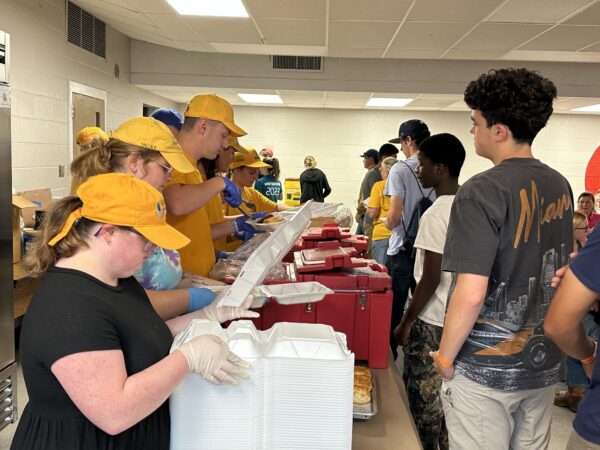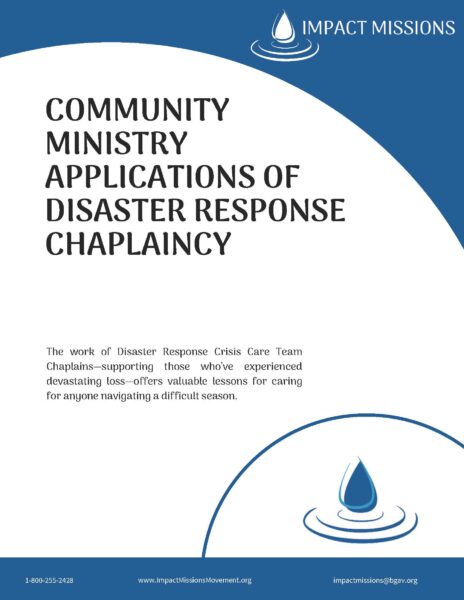For the last 11 months, Impact Disaster Response has been partnering with local churches and volunteers statewide to coordinate recovery and rebuilding from Hurricane Helene. While the floodwaters and news coverage of the storm dissipated in the weeks after the storm, the response has continued almost nonstop since. This year has also seen two separate flooding events in the same region. With a week of mass feeding, weeks of chainsaw and mudout work, and months of rebuilding homes affected by the storm, we have seen many of our volunteers multiple times in Damascus – serving to ensure people can return to their homes. The work seems to be nearing completion, right as we enter the heart of hurricane season.
Disaster Response and long-term rebuild is like a marathon that starts with a two-mile sprint. When a storm strikes, everyone moves into high gear, mobilizing resources and people to meet the immediate needs. The disaster is all over the news, and people are actively invested in giving and serving. As relief moves into recovery and development, we see relationships beginning to form. The response that started because of a stated need and a request grows into a long-term relationship as we meet the people, learn the community, and want to be part of their story.

photo credit: Paul Berkley
Our experiences in Damascus led to a long-term site at One Way Ministries, extensive work with Trails to Recovery, and local churches who have helped us find new partners and new communities to serve. It led to us participating in a complete rebuild of eight homes with Mennonite Disaster Services. It also led to 180 youth and adults from across the state serving in the community to complete repairs on multiple homes as part of Impact Mission Camps. And it has contributed to the plan for a long-term presence and partnership between Impact Disaster Response and local churches to ensure we can respond even faster in future disasters. The initial response to Hurricane Helene led to a lot of groups wanting to come and serve for the first few weeks and then quickly moving on because their focus is primarily immediate relief. But staying for the long term has led to strong relationships, new opportunities to serve, and trust for when the next need arises.
If you or your church would like to be part of disaster response in Virginia, you can train in most areas October 3 and 4 in Richmond. Get more information and register here.
And the Disaster Response principles you learn at training and apply in disaster sites aren’t just for other communities where we serve after a storm. Check out this resource on how disaster response principles can support your church’s ministries in your community.

